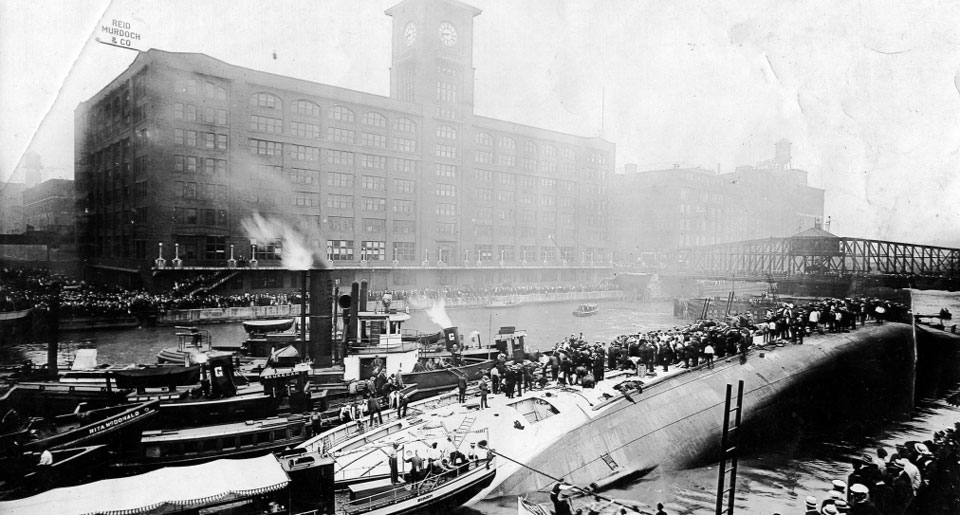In the days that followed in the aftermath of the Disaster, the Chicago Department of Health continued working tirelessly to aid in numerous areas of response. Their knowledge, expertise, and quick action was crucial.
Staff spent time cleansing and fumigating rooms at the Reid-Murdoch building once the bodies were removed and taken to the temporary morgue setup at the Second Regiment Armory. The Health Department offices remained open and staffed around the clock.
The Department of Health's Superintendant gave a report of the Disaster and relief work during a meeting with the Mayor's Committee, where key city officials met and finalized action plans. It was decided that the Department of Health would look after the general health conditions of those who had been immersed in the dirty Chicago River water. Relief work rapidly continued for the families.
On Sunday, the day after the Disaster, 100 Department of Health nurses gathered in City Hall and were instructed by Health Commissioner John Robertson regarding treatment of health problems. It had been less than 24 hours since the tragedy, and the Department already had 500 families with information. Visitation to the families began immediately in conjunction with the Red Cross.







